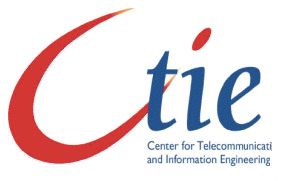|
http://www.ex.ac.uk/~se95rwh/history6.htm As early as 1968, development in Japan began to aim for a HDTV system. Early development attempted to establish the best parameters for this system, by experimentation with different aspect ratios, interlace ratios and numbers of lines. During the 1970's great efforts were made to develop and manufacture the necessary equipment for the emerging system and by 1980 when a system was demonstrated, all necessary cameras, picture tubes, projection displays and even videotape recorders were available. The camera used 70mm film since this ensured a high picture quality. Later in 1980, Nippon Hoso Kyotai (NHK) published a standard for their new system based on their public demonstrations. It suggested: 1125 lines per frameThe NHK system was obviously not compatible with existing NTSC/PAL/SECAM systems, although it used the same 60Hz field rate as NTSC. Despite this, with a world standard being hoped for the suggested system allowed reasonably simple transcoding, since the 525,625 and 1125 line systems are linked by the common factor 25. During the 1980's work continued towards public broadcasting of this system and a satellite system was used for some experimental broadcasts. In 1984 the Olympic games were transmitted in Japan using the NHK system and by 1989 a regular service was being provided for about an hour each day. In 1986 the USA joined Japan in pushing for the NHK system to be used as a world standard, although there was some call from TV companies in America for a 1050 (2x525) line system due to the simplicity of conversion from and to NTSC. European countries, with the added complexity of having to convert from 50 fields/s to 60 fields/s were not convinced. There was also the commercial consideration of paying royalties for the use of the NHK system. Within a few months a group of companies and broadcasters from Europe known as 'Eureka EU95' had begun to develop its own HDTV standard. This was defined as a 1250 (625x2) line, 50 fields/s system to allow backwards compatibility with PAL and SECAM and was revealed in 1988. Despite the differences between the two systems, several areas have been agreed upon in an effort to create some standardisation. These include the aspect ratio of 16:9 and the colour system, with standard equations for working out luminance and chrominance components. However, towards the end of the 1980's and early 1990's, HDTV was forced to alter course to accomodate the digital technology which was becomming a factor in the design of television systems. http://www.ex.ac.uk/~se95rwh/history7.htm Towards the end of 1990, with effective compression systems becoming available a European project began with the intention of creating a digital television system. This was not intended to provide solely HDTV, although the work could equally apply to this. Previously, DTV had been thought to be impractical to implement due to the huge amounts of data required; standard TV would require 6 million bits per second and HDTV 30 million bps. With compression systems it became possible to use existing channel bandwidths for DTV channels and later even for each to use smaller bandwidths. In 1993 a new group was formed, initially called the European Launching Group and later the DVB (Digital Video Broadcasting) project. It was set up with the intention of creating technical standards. A seperate organisation, the Working group on Digital Television began studying the feasibility of terrestrial digital television in Europe. By the end of the year a world standard, the MPEG-2 compression system was agreed upon, which also has the advantage of high interoperability with computer technology. However, modulation, conditional access and multiplexing were all still to be considered. In 1994, the leaders of the Eureka EU95 project began research to convert their analogue HDTV system to using digital technologies. This was known as the Eureka Advanced Digital Television Technologies (ADTT) project. The group began work and consulted closely with the DVB project group. Meanwhile in America, similar research was being conducted towards a fully digital HDTV system. Work by various companies in the early 1990's resulted in their collaboration and in 1993 they formed the Grand Alliance, setting down a single American standard from the work of each individual company. In 1997 the DVB project released a Data Broadcasting specification, paving the way for DTV implementation and finally, in October 1998 digital television in the UK became a reality as SkyDigital, a satellite DTV service began transmission. This was closely followed by ONDigital, a terrestrial service launched in November. A cable service is also in the process of being implemented and is likely to come into service in the summer of this year (1999). The American ATSC (Advanced Television Systems Comittee) system, based on the Grand Alliance work was also launched towards the end of 1998. It recommended HDTV transmission, but did not explicitly require it.
The site was first published on July 7, 1999. This is Version 1.7
|
